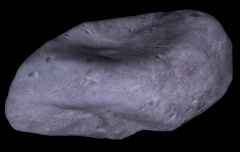Difference between revisions of "5786 Talos"
(Arvil moved page User:Arvil/Sandbox02 to 3200 Phaethon: Move to article page.) Tag: New redirect |
(Created page.) Tag: Removed redirect |
||
| Line 1: | Line 1: | ||
| − | + | {| cellpadding="2" cellspacing="0" style="margin:25px 0 0 10px; border:3px solid lightsteelblue;width:250px; font-size:90%; font-family:'Arial','Helvetica'; float: right; clear: right;"Template in Orbiter" | |
| + | !bgcolor="lightsteelblue" colspan="2" align="center" |5786 Talos | ||
| + | |- | ||
| + | |colspan="2" align="center"|[[Image:5786Talos-MercuryCrosser-Orbiter2005P1.jpg|240px]] | ||
| + | |- | ||
| + | |colspan="2" align="center"|'''5786 Talos from ''Mercury_Crosser.zip'' in Orbiter 2005P1''' | ||
| + | |- | ||
| + | !bgcolor="lightsteelblue" colspan="2"|Designation | ||
| + | |- | ||
| + | |Name||align="right"|5786 Talos | ||
| + | |- | ||
| + | |width="30%"|Reference body||align="right" width="30%"|Sun | ||
| + | |- | ||
| + | |width="30%"|Number of satellites||align="right" width="30%"|0 | ||
| + | |- | ||
| + | !bgcolor="lightsteelblue" colspan="2"|Planetary mean orbits | ||
| + | |- | ||
| + | |width="30%"|Epoch||align="right" width="50%"|2004.80629705681 | ||
| + | |- | ||
| + | |width="30%"|Semimajor axis (a)||align="right" width="50%"| 161778877564.749 m | ||
| + | |- | ||
| + | |width="30%"|Eccentricity (e)||align="right" width="30%"| 0.826845526888559 | ||
| + | |- | ||
| + | |width="30%"|Inclination (i)||align="right" width="30%"|23.242369860101°<br>(0.405655880025056 radian) | ||
| + | |- | ||
| + | |width="30%"|Longitude of the ascending node (LAN, ☊)||align="right" width="30%"|161.343881066533°<br>(2.81598195255714 radian) | ||
| + | |- | ||
| + | |width="30%"|Longitude of periapsis (ϖ)||align="right" width="30%"|169.649400524089° radian<br>(2.96094061317994 radian) | ||
| + | |- | ||
| + | |width="30%"|Mean longitude (L)||align="right" width="30%"|169.929917539618°<br>(2.9658365587088 radians) | ||
| + | |- | ||
| + | !bgcolor="lightsteelblue" colspan="2"|Rotational Elements | ||
| + | |- | ||
| + | |width="30%"|Sidereal Rotation Period||align="right" width="50%"|138672 seconds<br>(38.52 hours) | ||
| + | |- | ||
| + | |width="30%"|Sidereal Rotation Offset||align="right" width="50%"|0 | ||
| + | |- | ||
| + | |width="30%"|Obliquity||align="right" width="30%"|0 radians<br>0.1° | ||
| + | |- | ||
| + | |width="30%"|LAN||align="right" width="30%"|0 | ||
| + | |- | ||
| + | !bgcolor="lightsteelblue" colspan="2"|Selected physical parameters | ||
| + | |- | ||
| + | |width="30%"|Mean radius||align="right" width="30%"| 2450 m | ||
| + | |- | ||
| + | |width="30%"|Mass||align="right" width="30%"|2.9×10<su>12</sup> kg | ||
| + | |- | ||
| + | |width="30%"|Note||align="right" width="30%"|*Elements given are from 5786 Talos.cfg (Mercury_Crosser.zip). | ||
| + | |} | ||
| + | |||
| + | '''5786 Talos (1991 RC)''' is [[Category:Near-Earth objects|Near-Earth object]] object. It was discovered by [[w:Robert H. McNaught|Robert H. McNaught]] on 3 September 1991 from images from [[w:Siding Spring Obserbatory|Siding Spring Observatory]]. | ||
| + | |||
| + | The orbit of Talos varies from about 0.187 to 1.9757 [[Astronomical unit|AU]], which makes Talos cross the orbits of all four of the inner planets. | ||
| + | |||
| + | Talos' mean radius is about 0.445 km. | ||
| + | |||
| + | == 5786 Talos in Orbiter == | ||
| + | Talos was introduced to Orbiter with the release of ''Mercury_Crosser.zip'' in June 2005. | ||
| + | |||
| + | Note that the landing surface as given in the config file is spherical, but the visual of Icarus is not, if you land, you will likely be above or below the visual surface. | ||
| + | |||
| + | {| class="wikitable" style="text-align: center" | ||
| + | |colspan="8"|<center>'''Orbiter versions and add-ons which include 5786 Talos'''</center> | ||
| + | |- | ||
| + | !Add-on!!Source!!Version!!Author!!Type!!Release Date!!Compatibility!!Wiki article | ||
| + | |- | ||
| + | |[https://www.orbiter-forum.com/resources/mercury-crosser-asteroids.316/ Mercury Crosser Asteroids]||O-F Resources||2005-06-01||Nighthawke||Scenery||2 June 2005|||| | ||
| + | |} | ||
| + | |||
| + | ==See also == | ||
| + | [[w:5786 Talos|5786 Talos]] at [[w:Wikipedia|Wikpedia]] | ||
| + | |||
| + | ==Gallery== | ||
| + | <gallery widths="100" heights="100"> | ||
| + | 5786Talos-MercuryCrosser-Orbiter2005P1.jpg|<center>1566 Icarus from ''Mercury_Crosser.zip'' in Orbiter 2005P1</center> | ||
| + | </gallery> | ||
| + | |||
| + | {{SolarSystem}} | ||
| + | |||
| + | [[Category:Articles|Phaethon]] | ||
| + | [[Category:Celestial bodies|Phaethon]] | ||
| + | [[Category:Solar System|Phaethon]] | ||
| + | [[Category:Near-Earth objects|Phaethon]] | ||
Revision as of 03:25, 7 October 2024
5786 Talos (1991 RC) is object. It was discovered by Robert H. McNaught on 3 September 1991 from images from Siding Spring Observatory.
The orbit of Talos varies from about 0.187 to 1.9757 AU, which makes Talos cross the orbits of all four of the inner planets.
Talos' mean radius is about 0.445 km.
5786 Talos in Orbiter
Talos was introduced to Orbiter with the release of Mercury_Crosser.zip in June 2005.
Note that the landing surface as given in the config file is spherical, but the visual of Icarus is not, if you land, you will likely be above or below the visual surface.
| Add-on | Source | Version | Author | Type | Release Date | Compatibility | Wiki article |
|---|---|---|---|---|---|---|---|
| Mercury Crosser Asteroids | O-F Resources | 2005-06-01 | Nighthawke | Scenery | 2 June 2005 | ||
See also
Gallery
| edit The Solar System | |
|---|---|
| Central star |
Sun (Sol) |
| Planets |
Mercury - Venus - Earth - Mars - Jupiter - Saturn - Uranus - Neptune |
| Natural satellites |
Moon - Phobos - Deimos - Io - Europa - Ganymede - Titan - more... |
| Add-ons |
Planets - Dwarf Planets - Small objects - Natural satellites - Alternative star systems |

